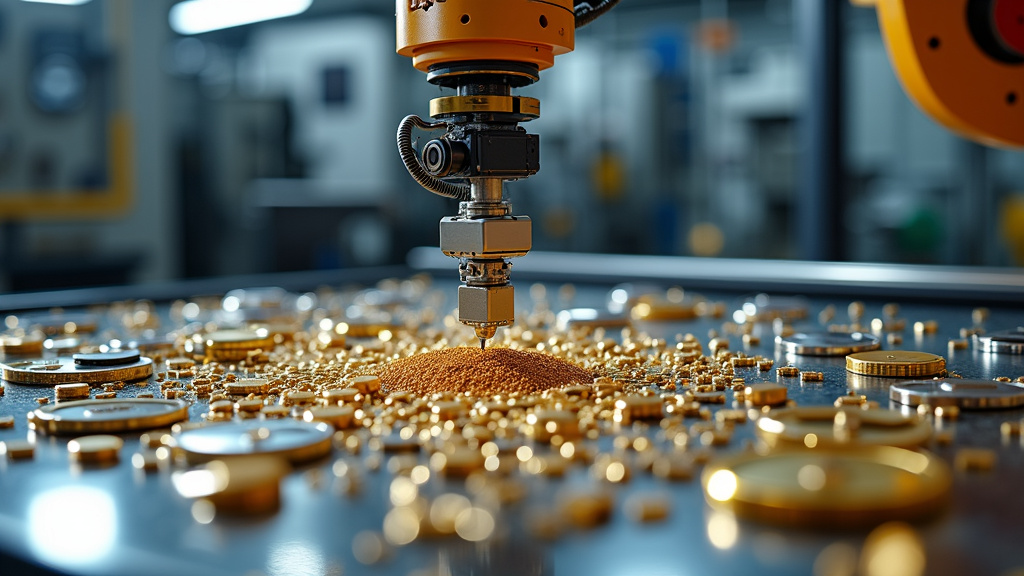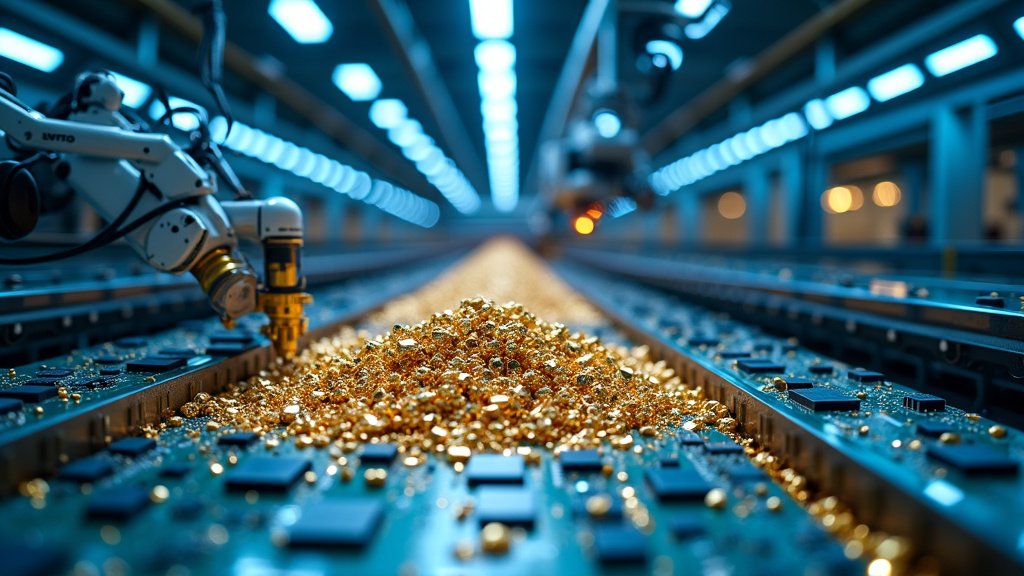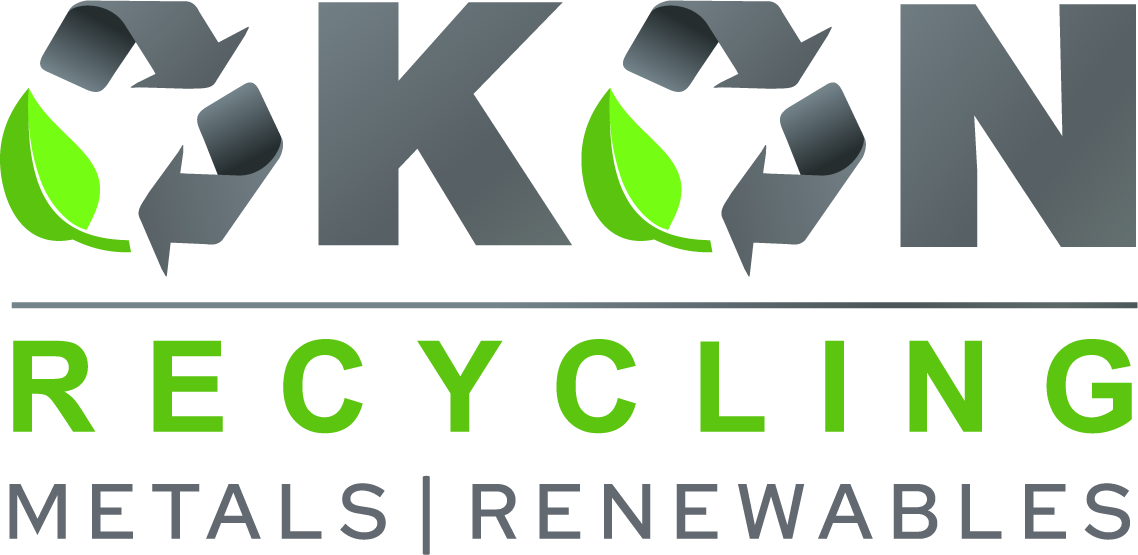5901 Botham Jean Blvd, Dallas, TX 75215
Rare Metal Scrap Logistics Services: A Sustainable Solution
February 20, 2025Imagine a world where your outdated smartphone doesn’t end up in a landfill, but instead embarks on a journey of rebirth. That’s the promise of efficient rare metal scrap logistics.
By optimizing the collection, sorting, and processing of these precious materials, these services are not just recycling – they’re redefining our relationship with waste.
But why should you care?
Consider this: recycling rare metals can reduce energy consumption by up to 90% compared to primary metal production. That’s not just a win for your pocket; it’s a significant reduction in carbon emissions. In an era where climate change is a pressing issue, every bit counts.
So, how are industries leveraging these services to optimize their waste management systems? It’s not just about tossing scraps into a bin anymore. Modern recycling facilities are employing advanced technologies like automated sorting systems and artificial intelligence to identify and separate different types of metals with unprecedented accuracy. This precision ensures that even the tiniest fragments of rare metals are recovered and reintegrated into the production cycle.
The benefits of rare metal scrap logistics services extend far beyond environmental conservation. They’re creating jobs, driving innovation, and even influencing geopolitics by reducing dependence on volatile supply chains. It’s a ripple effect that’s transforming industries and communities alike.
Efficient Practices in Rare Metal Scrap Recycling

The recycling industry has seen impressive advancements, particularly in rare metal scrap recycling. As demand for these valuable materials rises, implementing advanced technologies and efficient logistics is crucial for maximizing sustainability.
Advanced Sorting Technologies
One significant innovation in rare metal recycling is the use of sophisticated sorting technologies. X-ray fluorescence (XRF) and laser-induced breakdown spectroscopy (LIBS) have transformed the identification and separation of different metals.
These technologies allow recyclers to quickly and accurately sort complex metal alloys, ensuring higher purity levels and efficient recovery of rare metals. By reducing contamination and improving sorting accuracy, these systems greatly enhance the recycling process.
Automated robotic systems with artificial intelligence are also crucial in modernizing rare metal recycling. These machines can handle dangerous tasks, adapt to new scrap types, and sort materials with unmatched precision.
Hydrometallurgical Processes
Hydrometallurgical processes are another groundbreaking approach in rare metal recycling. This method uses aqueous chemistry to extract valuable metals from complex ores and electronic waste, offering a more eco-friendly alternative to traditional smelting.
Researchers are exploring bio-based solvents and non-toxic leaching agents that can selectively dissolve specific rare metals. This approach not only increases recovery rates but also reduces harmful emissions linked to conventional methods.
Efficient Logistics Strategies
Optimizing logistics is essential for enhancing the efficiency of rare metal scrap recycling. Advanced tracking systems and route optimization software are used to streamline the collection and transportation of scrap materials.
These tools help reduce fuel consumption, lower transportation costs, and ensure recycling facilities operate at optimal capacity. By implementing smart logistics solutions, recyclers can significantly improve efficiency and reduce their environmental impact.
Urban Mining and E-Waste Recovery
Urban mining has become a sustainable approach to rare metal recycling. This strategy focuses on recovering valuable materials from electronic waste and urban infrastructure, providing a rich source of rare metals without traditional mining.
Techniques like bioleaching make urban mining more viable and environmentally friendly. These methods allow for the extraction of precious and rare earth elements from discarded electronics, reducing reliance on primary mining and its environmental impacts.
Blockchain Technology for Transparency
Blockchain technology in the rare metal recycling supply chain enhances transparency and traceability. This approach allows for secure recording and verification of transactions, ensuring the authenticity and quality of recycled rare metals.
By leveraging blockchain, recyclers can build trust among stakeholders, reduce fraud, and provide verifiable proof of sustainable sourcing practices. This technology is particularly valuable in the rare metals market, where provenance and quality assurance are critical.
As demand for rare metals grows, these efficient practices and technologies are paving the way for a more sustainable approach to resource management. By embracing these advancements, the recycling industry is maximizing the recovery of valuable materials and contributing to a greener future.
Key Technologies Comparison
To better understand the effectiveness of these technologies, a comparative table highlighting key metrics such as sorting accuracy, cost-effectiveness, and environmental impact would be beneficial.
| Technology | Sorting Accuracy | Cost-Effectiveness | Environmental Impact |
|---|---|---|---|
| X-ray fluorescence (XRF) | High | Moderate | Low |
| Laser-induced breakdown spectroscopy (LIBS) | High | Moderate | Low |
| Automated robotic systems | High | High | Low |
| Hydrometallurgical processes | N/A | Moderate | Low |
| Bio-based solvents | N/A | Moderate | Very low |
Challenges and Innovations in Rare Metal Logistics

The rare metals industry faces unique logistical challenges due to the diverse nature of these critical materials and their complex transportation requirements. From extraction to end-use, each step in the supply chain presents distinct challenges. How do these issues manifest, and what innovative solutions are emerging to address them?
One primary obstacle is the variety of rare metals, each with specific handling and transportation needs. Consider neodymium, used in powerful magnets, versus yttrium, crucial for LED production. These elements require different extraction methods, processing techniques, and storage conditions, complicating logistics planning and execution, often requiring specialized equipment and expertise.
Transportation poses another significant challenge. Many rare metal mining sites are in remote areas, far from processing facilities and end-users, necessitating long-distance transportation, often across international borders. The complexity of these supply chains is further compounded by strict regulations surrounding the movement of these valuable and sometimes hazardous materials.
Innovative Solutions Transforming the Industry
The rare metals industry is witnessing a surge of innovative solutions. At the forefront are advanced management systems leveraging artificial intelligence and machine learning, revolutionizing supply chain visibility with real-time shipment tracking and predictive maintenance of transportation equipment.
Blockchain technology also plays a crucial role in rare metal logistics. By creating an immutable record of each transaction and movement, blockchain enhances transparency and traceability, improving efficiency and combating fraud and illegal mining.
Transportation advancements, such as specialized containers and handling equipment for rare metals, are improving safety and efficiency during transit. Additionally, some companies are exploring autonomous vehicles and drones for transportation in remote mining areas, potentially reducing costs and risks associated with human operators.
No table output available
The Road Ahead: Challenges and Opportunities
While these innovations offer promising solutions, the rare metals industry still faces significant challenges. The global nature of the supply chain makes it vulnerable to geopolitical tensions and trade disputes. For instance, China’s dominance in rare earth production and processing raises concerns about supply security in other countries. How can the industry mitigate these risks and ensure a stable supply of these critical materials?
Furthermore, the environmental impact of rare metal mining and transportation remains a pressing issue. As the demand for these materials grows, driven by technologies like electric vehicles and renewable energy systems, how can the industry balance economic interests with sustainability concerns?
These questions underscore the ongoing need for innovation and collaboration in the rare metals logistics sector. As we look to the future, it’s clear that the industry’s ability to overcome these challenges will play a crucial role in shaping the global transition to a high-tech, low-carbon economy. What role will you play in this transformation?
Looking Ahead: The Future of Rare Metal Scrap Services

The future of rare metal scrap services is promising, marked by transformation through evolving policies and technological advancements that enhance efficiency and sustainability.
Artificial intelligence and machine learning are transforming how we sort and process rare metal scrap. These technologies improve metal identification accuracy and optimize recycling processes, reducing waste and maximizing resource recovery. Imagine facilities where AI-powered robots work alongside humans, each enhancing the other’s strengths for greater efficiency.
Blockchain technology introduces unprecedented transparency and traceability to the rare metal scrap supply chain. This innovation builds trust among stakeholders, combats fraud, and ensures ethical sourcing of materials. As accountability becomes crucial, such transparency is essential.
Advancements in hydrometallurgy and solvometallurgy enable new methods for extracting rare metals from complex e-waste. Projects like SOLCRIMET champion these environmentally friendly alternatives, reducing the industry’s ecological impact while improving recovery rates.
Policy changes are also shaping the future. Governments recognize the strategic importance of rare metals and are implementing regulations to encourage recycling and domestic processing. These policies secure supply chains and stimulate innovation, fostering a cycle of technological advancement and environmental stewardship.
The circular economy concept is gaining traction, with rare metal scrap services playing a key role. As manufacturers design products for end-of-life recycling, the efficiency of rare metal recovery will increase significantly. This shift conserves resources and creates economic opportunities in recycling.
Final Words
The future of rare metal scrap services lies in innovation and sustainability. By investing in advanced recycling technologies and adapting to evolving policies, we can transform waste into valuable resources, ensuring a more sustainable and resource-efficient world.
At Okon Recycling, we are leading this transformation, leveraging cutting-edge processes to maximize material recovery and minimize environmental impact. Our commitment to sustainable practices is shaping the future of the rare metal recycling industry.
Join us in redefining rare metal recycling. Contact Okon Recycling at 214-717-4083 to explore how we can help your business embrace sustainable scrap management and unlock new opportunities. Together, we can build a cleaner, more resource-efficient future.
